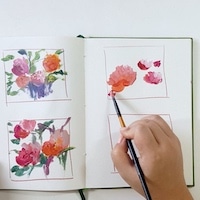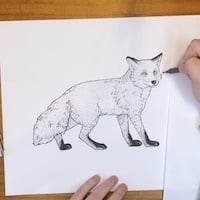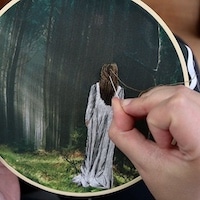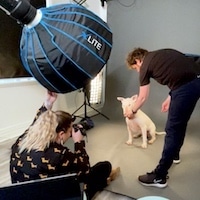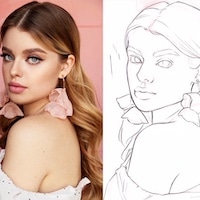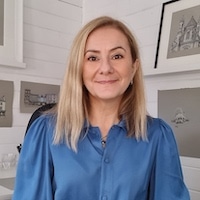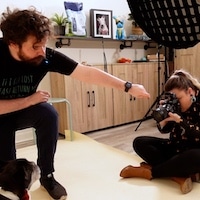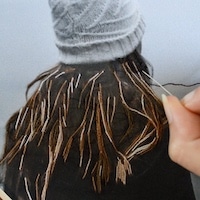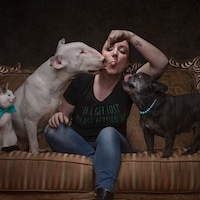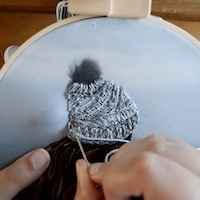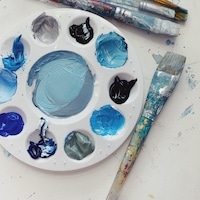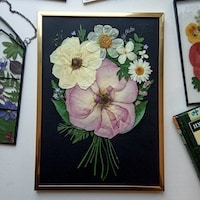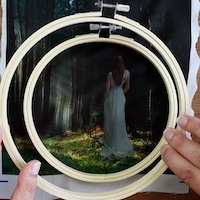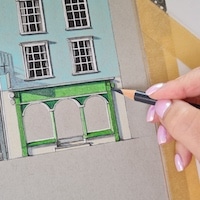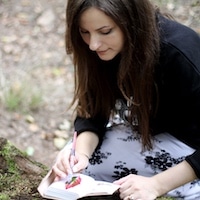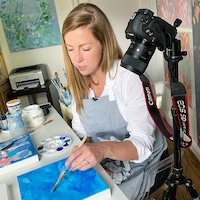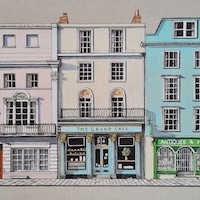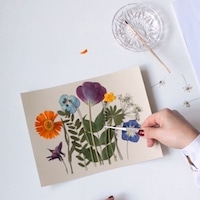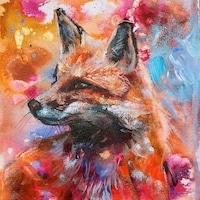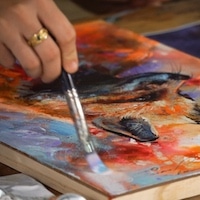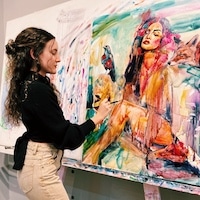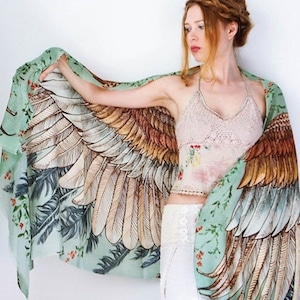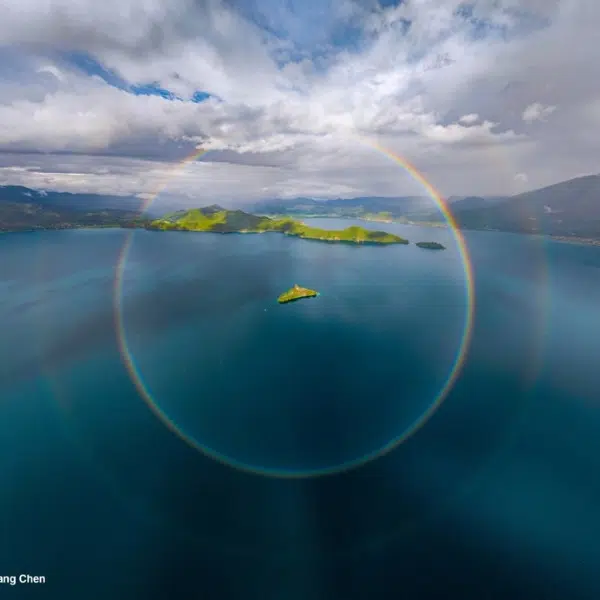
“The Frigatebird and the Diamond Ring” by Liron Gertsman, Canada, Bird Photographer of the Year and Gold, Birds in Flight
Magnificent Frigatebird, Fregatta magnificens.
Mazatlán, Sinaloa, Mexico
“After well over a year of planning and about a week of in-person scouting on the coast of Sinaloa in Mexico, my dream of capturing a bird in front of a total solar eclipse finally came true on April 8, 2024. Totality was due to last almost 4.5 minutes, and I had enlisted the help of a boat to position myself near some islets off Mazatlán that were frequented by seabirds. As the moon uncovered the sun’s edge at the end of totality, I captured this Magnificent Frigatebird in front of the spectacular eclipse phase known as the ‘diamond ring’, a moment that lasts just seconds.”
The world’s largest bird photography competition has announced its results, which were selected from the more than 25,000 photographs entered into the contest. In the end, Canadian photographer Liron Gertsman adds another award to his impressive resume, as he was named 2025 Bird Photographer of the Year for his image of a magnificent frigatebird soaring in front of a total solar eclipse.
The title comes on the heels of Gertsman’s win in the 2025 Audubon Photography Awards, further solidifying his reputation in the world of bird photography. Gertsman’s win is all the more satisfying, given the lengths he went to capture this extraordinary photograph.
“I spent well over a year of planning to capture my dream of a bird in front of the total solar eclipse,” he says. “I enlisted the help of a boat to position myself near some islets off Mazatlán that were frequented by seabirds. As the moon uncovered the sun’s edge at the end of totality, I captured this image during the eclipse phase known as the ‘diamond ring’—a moment that lasts mere seconds.”
Judges were struck not only by the technical excellence of Gertsman’s photography but also by his creativity and dedication to bringing his vision to life. The judges were also impressed with Polish photographer Tomasz Michalski, who was named Young Bird Photographer of the Year for his silhouetted portrait of a black vulture. Taken in Nicaragua, the photo showcases the beauty of creative thinking, as the young photographer, unimpressed by the scenery, took a different approach to photographing the bird.
In addition to the overall winners, awards were presented across eight categories, highlighting even more exceptional photography that came to the forefront. It’s possible to see all the winning photographs in the contest’s coffee-table book, which is published by Princeton University Press and now available online.
Scroll down to see our favorite winners and finalists, and then get your cameras ready. The 2026 competition is now open for entries from photographers of all levels.
The 2025 Bird Photographer of the Year contest has announced its winners.

“Minimalist Wings” by Tomasz Michalski, Poland, Young Bird Photographer of the Year and Gold, 15 – 17 Years
Black Vulture, Coragyps atratus. Popoyo, Nicaragua
“I took this photo during the biggest trip of my life, which was to Central America in July 2024, in the first country we visited, Nicaragua. I saw this big vulture drying its wings on a pole close to our hotel. I was being watched by the bird but it was very calm so I had a long time to photograph it. The scenery wasn’t beautiful so I decided to frame it with only part of the bird being in the photo. I tried various combinations and this one is my favorite.”

“Bloody Petrel” by Steffen Foerster, Germany, Gold, Best Portrait
Southern Giant Petrel, Macronectes
giganteus. Sea Lion Island, Falkland Islands (Malvinas)
“Giant petrels are the scavengers of the Southern Ocean, often seen feeding on carrion. This individual has its head stained red with blood from a recent meal. Although their feeding habits may seem gruesome, these birds play a vital role in the ecosystem by preventing the spread of disease. Despite their appearance, giant petrels are surprisingly devoted parents, with both males and females taking turns incubating their single egg and guarding their chick for weeks. Once heavily persecuted for their oil, their populations have rebounded thanks to conservation efforts, although they still face threats from fishing practices and climate change.”

“Graceful Flight Over Wild Bloom” by Sasha Jumanca, Germany, Gold, 11 and Under
European Bee-eater, Merops apiaster. Mahmudia, Romania
“While exploring the Danube Delta in Romania this summer, I discovered a European Bee- eater colony in a nesting cliff where the birds were tirelessly chasing prey for their chicks nestled in the burrows. The birds were flying over a field of wildflowers, whose colors beautifully mirrored the bee-eaters’ plumage. I was captivated by their agility as they swiftly changed speed and direction, tracking insects through the air. After many attempts, I finally captured this bird in flight, its wings fully spread, showing the beautiful colors of its feathers in great harmony with the flowers.”

“Feasting at Sunset” by Franco Banfi, Switzerland, Gold, Birds in the Environment
Brandt’s Cormorant, Phalacrocorax penicillatus.
Espíritu Santos, Mexico
“I was in the Sea of Cortez, near Los Islotes, a fistful of rocks that is part of the Espíritu Santo archipelago, to document the unbelievable recovery of this marine protected area. Los Islotes is the southernmost breeding site of the Californian Sea Lion in the Northern Hemisphere, but it is a wonderfully wild place for many other reasons. I was fascinated by the extraordinary skills and elegance of Brandt’s Cormorants as they fed on an almost endless school of small pilchards. Most of the hunting activities took place at sunset, when the low natural light conditions were challenging. But on one occasion the conditions were favorable and I was able to take this particular image that gives a three- dimensional perspective.”

“Voice of the Ash Forest” by Maxime Legare-Vezina, Canada, Silver, Best Portrait
Common Raven, Corvus corax. Jasper National Park, Alberta, Canada
“After the devastating wildfires of summer 2024, I visited Jasper to witness the desolation. In the scorched landscape, where ash covered everything, only a few animals had returned. Among them, Common Ravens were some of the first to reclaim the land. This one, perched on a charred tree, was calling out, as if mourning the loss of its kingdom.”

“Radiographing” by Sarthak Agrawal, India, Gold, Conservation (Single)
Common Hawk-Cuckoo, Hierococcyx varius. Aurangabad, Maharashtra, India
“This pictured is of an injured juvenile Common Hawk-Cuckoo that had been rescued after being hit by a vehicle in the city. The bird had taken shelter under a parked car before being rescued by the ManwithIndies Foundation and sent for treatment under the forest department’s guidance. To assess the damage to its wings, a radiograph was obtained after anesthetising the bird. Common Hawk-Cuckoos are brood parasites, laying their eggs in the nests of smaller urban birds like sunbirds, prinias, and tailorbirds. While these smaller birds have adapted well to urban environments, the much larger hawk-cuckoo struggles to navigate and survive. Every year, several cuckoo chicks are found under similar circumstances, and foundations like ManwithIndies rescue many of them.”
Over 25,000 exceptional examples of bird photography were entered into the contest.

“Urban Incubator” by Tomáš Grim, Czech Republic, Silver, Urban Birds
Eurasian Jay, Garrulus glandarius. Brno, Czech Republic
“Eurasian Jays are not generally thought of as urban birds but can sometimes be found in parks and gardens. They almost always build their nests in trees, avoiding artificial structures – so when a friend reported finding a jay’s nest inside (!) a streetlamp I considered it a joke; the Eurasian Jay is not a hole nester. Yet I could not resist checking it out and to my amazement the nest was real. I waited for the ‘blue hour’ to combine the warm light from the lamp with the cold colors of this unique nest’s surroundings before taking this photo.”

“Through the Marigolds” by Baiju Patil, India, Silver, Birds in Flight
Barn Swallow, Hirundo rustica. Hiware Bazar, Maharashtra, India
“The fields of marigolds around the village of Hiware Bazar are a sight to behold, and seeing the flocks of swallows skimming over them gave me the idea for this photo. I noticed that some of the birds kept feeding over the same area and set up my camera so that I could fire it with a remote. This is one of the many thousands of photos I took and is the one I am most pleased with.”

“Trapped” by Charlotte Keast, United Kingdom, Silver, Conservation (Single)
Shoebill, Baleniceps rex. Entebbe, Uganda
“In heartbreaking contrast to its wild peers, this Shoebill stork is confined in a small dirty cage in a zoo in Entebbe, Uganda. Known for their solitary and elusive nature, Shoebills thrive in vast wetlands, hunting in silence and flying gracefully over open landscapes. Here, trapped behind glass for the entire day and on full display to the public, this majestic bird is deprived of space to fly, hunt or retreat from the constant gaze of visitors. Just a few miles away its wild counterparts enjoy the freedom of Uganda’s marshes – a stark reminder of the unnatural conditions that captivity imposes on such extraordinary creatures.”

“King of the Forest” by Mateusz Piesiak, Poland, Silver, Bird Behavior
Western Capercaillie, Tetrao urogallus.
Jura, Switzerland
“This male capercaillie, illuminated by the first rays of the rising sun, had perched in the ideal spot. The emotions I felt are hard to put into words. Overwhelmed by the scene, I forgot to adjust my camera settings, resulting in most of the photos being blurry. Thankfully, though, a few turned out sharp!”

“Feathered on Panels” by Alex Pansier, Netherlands, Gold, Urban Birds
Carrion Crow, Corvus corone. Near a highway, Netherlands
“A lone bird rests on a vast field of solar panels alongside a highway in the Netherlands – a striking symbol of the tension between green energy and nature. As we transition to sustainable power, the infrastructure often claims scarce space that could have been left for wildlife. This spontaneous moment captures that paradox: progress requires space, but at what cost to nature? No bait was used – just a fleeting encounter between a bird and a modern-day monoculture.”

“Landing in a Sea of Swans” by Andreas Hemb, Sweden
Whooper Swan, Cygnus cygnus. Tysslingen, Örebro, Sweden
“Nothing heralds the arrival of spring more evocatively than the sight and sound of migrant birds in Sweden, with the appearance of Whooper Swans being a particular highlight. I took this image at dusk as the swans were gathering in a field next to a lake. Using a slow shutter speed to emphasize motion, I tracked one of the swans as it came in to land, aiming to capture its grace against an abstract sea of swans on the ground.”
Awards were handed out to photographers of all levels across eight categories.

“Black and White Swan” by Raoul Slater, Australia, Silver, Black and White
Black Swan, Cygnus atratus. Gympie, Queensland, Australia
“At thirteen, I switched my Canon AE-1 from programme mode to aperture priority – and I’ve worked that way ever since. I prefer controlling depth of field first, shutter speed second. It usually works – except in moments like this, when photographing in low, pre-dawn light when the sun suddenly rises. I forget to adjust, the shutter speed maxes out, and the image blows out. This photo, taken on a misty morning, appeared three stops brighter than I’d visualized – and it took my breath away. Sometimes, a divine accident redeems a thousand mistakes.”

“Structures” by Levi Fitze, Switzerland, Silver, Birds in the Environment
Rock Ptarmigan, Lagopus muta. Alpstein, Switzerland
“I spotted this Rock Ptarmigan walking slowly up a snowy hillside in the Swiss mountains on a frozen winter’s day. Ptarmigans are masters of camouflage, their white winter plumage blending in so well with the snow. I noticed that the footprints this bird was leaving in the snow, emphasized by the low, flat light, were perhaps more noticeable than the bird itself. I framed the image so that the bird was part of the picture to highlight its expansive environment and show the wonderful textures in the snow.”

“The Giant” by Jannik Jansons, Germany, Gold, Black and White
European Shag and Common Guillemot, Gulosus aristotelis and Uria aalge.
Hornøya, Varanger, Norway
“Using a wide-angle lens, I photographed a shag taking off on the Norwegian island of Hornøya. In the image it looks like a gigantic bird flying over all the others, but in reality the bird is flying very close to the lens and therefore appears much larger. Because of the very small aperture, the sun is captured as a star through the blades of the lens. The conversion to black and white reinforces the confusing perspective, as the details are hard to see and it is more difficult to determine the birds’ relative size.”

“Jewel of the Forest” by Harry Sedin, Sweden, Gold, 12 – 14 Years
‘I‘iwi, Drepanis coccinea. Haleakalā National Park, Hawaii, United States
“Haleakalā National Park is infamous for altitude sickness, but visiting it led me to an unforgettable moment. Feeling lightheaded at nine thousand feet, we turned back and stopped at Hosmer Grove Campground. The moment I stepped out, flashes of red flickered through the trees, three to four ‘I‘iwi landing on a sunlit bush. With harsh light and no clouds above us, I underexposed the shot, creating a black background that made the bird’s scarlet feathers glow. The altitude may have made me miss out on a Short-eared Owl, but it gave me the perfect opportunity to capture Hawaii’s iconic honeycreeper in stunning contrast.”

“Angel or Demon” by Francesco Guffanti, Italy, Gold, Bird Behavior
Golden Eagle, Aquila chrysaetos. Aosta Valley, Italy
“A Red Deer killed by a car in the pine forest near to where I live provided a fantastic opportunity to document the activity of carnivores and scavengers visiting the carcass. With the help of a friend I positioned and camouflaged a motion sensor and two mirrorless cameras nearby. To avoid any disturbance I avoided the use of flashes or any other type of artificial light. After foxes, crows and some small birds had paid a visit, most unexpectedly, and despite the thick blanket of branches, a Golden Eagle appeared and descended to feed on the carcass. It was an unforgettable experience.”

“Sainte Trinité” by Benoit Henrion, France, Bronze, Urban Birds
Western Barn Owl, Tyto alba. Hauts-de-France, France
“This disused French chapel was occupied by Barn Owls who had no flat surfaces on which they could nest. So I installed a nest box inside and was surprised and delighted when, a year and a half later, a pair settled in and bred successfully. The photo was taken from my hide tent at dusk, the light coming from the street lamps that had just been turned on.”

“Photo Art” by Philipp Egger, Italy, Gold, Creative Perspectives
Common Kingfisher, Alcedo atthis. Alps, Italy
“My idea behind this photograph was to capture a kingfisher flying over a piece of artwork so that the two became merged. To achieve this, I mounted my camera on a dead fallen tree across a small stream and pointed it vertically downwards at the artwork positioned just above the water’s surface. I then waited for days in my camouflaged tent not far away triggering the camera with a radio remote release when the bird flew over the picture.”





